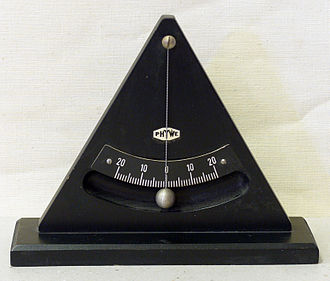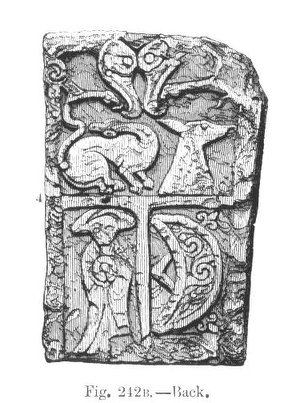It looks like you're using an Ad Blocker.
Please white-list or disable AboveTopSecret.com in your ad-blocking tool.
Thank you.
Some features of ATS will be disabled while you continue to use an ad-blocker.
share:
reply to post by Logarock
Before we lose sight of this, and while I still remember, talking about deer:
Stuart McHardy
From one of my favourite writers on the subject!
Before we lose sight of this, and while I still remember, talking about deer:
I will post more later but there looks like a connection to the word Alba and Rome and Dianna. There was a center of Dianna worship in Alba Longa where Romulus and Remus are said to have been born. As the story goes they were reared by dogs. Dogs are a big part of Dianna cult. The moon is said to be called Dianna's mirror but need to look into that more.
Ultimately everything leads back to the story of Sadv(Grainne), the hind in the woods who was pursued so fiecely by the Black Man(Druid), the Druid who represented the social and religious order, but protected by Fionn and the Fianna, the last champions of Our Lady of the Night. For Finn’s real name ( Finn,”handsome”, “white”, or “fair”, being a nickname) was Demne, which suggests an ancient dam-nijo (small Deer); his son was Oisin,”the Fawn”; and Oisin’s son was called Oscar, which means hew who ovs the deer…..Indeed the whole epic cycle of Finn, or of Leinster(?), is placed under the symboloc patronage of the deer……All this is enough to make Sadv(Grainne)and the story of Oisin particularly significant; for the hind goddess, or goddess of hinds is related to the most ancent image of Artemis -Diana, the sun goddess of these people who came to Western Europe before the Indo-Europeans
Stuart McHardy
From one of my favourite writers on the subject!
reply to post by Danbones
I don't want to be known as that woman who spams the boards with monastery facts, but just for you I'll return to this!
I don't want to be known as that woman who spams the boards with monastery facts, but just for you I'll return to this!
A study of one the most important archaeological discoveries in Scotland for 30 years, a Pictish monastery at Portmahomack on the Tarbat peninsula in Easter Ross, has found that they were capable of great art, learning and the use of complex architectural principles. And, in a discovery described as "astonishing, mind-blowing" by architectural historians, it appears that the people who built the monastery did so using the proportions of "the Golden Section", or "Divine Proportion" as it became known during the Renaissance hundreds of years later. This ratio of dimensions, 1.618 to one, appears in nature, such as in the spiral of seashells, and the faces of people considered beautiful, such as Marilyn Monroe. It can be seen in Notre Dame Cathedral in Paris, the Alhambra palace of Granada in Spain, the Acropolis in Athens and the Egyptian Pyramids, but was thought to have been too advanced for the Picts.’
reply to post by Logarock
And this from McHardy is extremely helpful, I think:
And this from McHardy is extremely helpful, I think:
Historians tend to like to deal with the knowledge of the past by putting it in boxes. Even today there are lecturers in Scottish Universities who tell their students they must never, ever refer to anything as Pictish before 297 when Ammianus Marcellinus first mentions them. This is a bit akin to Bishop Usher’s famous calculation of the beginning of the world according to an analysis of the Bible – he came up with I believe 3pm June 4th 3004 BC or something similar. The idea that the Picts sprang into existence in 297 when the Romans noticed them is patently silly but sticking to historic references does not even support this idea. Apart from the work of Rivet and Smith on the name Pict/Pexa there are other historians who see the situation differently. Given that the first reference to the Pict by the bold Ammianus actually talks of the problems Julius Caesar had in fighting Picts and Britons surely we can put the Pictish period back somewhat. In fact this has been suggested by Alfred Smyth in the New History of Scotland in the volume Warlords and Holymen. In this he suggests that the Pictish period be opened at AD80 after the Battle of Mons Graupius between the Romans and the Caledonians a battle won by the Romans according to the Romans There are several 4th century references by Roman writers to Caledonians and other Picts which makes it clear that the Picts are nothing other than the Caledonians by another name. By taking the dawning of the Pictish period from AD 8 allows us to resolve anther wee problem. Until a couple of decades ago the Brochs were accepted as Pictish. Then radio-carbon dating put them into the period of about 100BC to 100 AD and therefore outside the Pictish period as previously defined. If we accept Mons Graupius as a suitable opening date for the Pictish period we can then bring the brochs back into the picture. However the problem of the Picts suddenly springing into existence remains though now we can say that they were either descendants of the Caledonians or the same people with a different name. I agree with Smyth that this is a better date for the start of the Pictish period and if it is accepted it will open up new possibilities in the dating of the Pictish stones
reply to post by beansidhe
Here in the great lakes area where the Diety of the Ojibwa Indians is the giche manitou...manistu in India, here the manitou is named kichi wanna...the Ojibwa got the dog from a giant scorcerer who made it as a gift
The goddess Bau-a sumerian female king/goddess is always shown with dogs
apparantly according to geneticists dogs were bread from wolves about 90,ooo years ago
but by who?
Here in the great lakes area where the Diety of the Ojibwa Indians is the giche manitou...manistu in India, here the manitou is named kichi wanna...the Ojibwa got the dog from a giant scorcerer who made it as a gift
The goddess Bau-a sumerian female king/goddess is always shown with dogs
apparantly according to geneticists dogs were bread from wolves about 90,ooo years ago
but by who?
edit on 22-2-2014 by Danbones because: (no reason given)
considering the term to "cross" an ocean
where did the word PICT-ure come from?
also contains the term "ur"...as in city of...
like in the time and place where PICT-o- graphs were invented
There has been talk of how our language english is descendant from pictish aryan and not the german aryan as is commonly espoused, and also that shakespeare was actually a bunch of secret society type intellictuals who wrote an promoted all those plays just for the reason of shaping the english language.
just noticed the union jack is a pair of crosses
where did the word PICT-ure come from?
also contains the term "ur"...as in city of...
like in the time and place where PICT-o- graphs were invented
edit on 22-2-2014 by Danbones because: (no reason given)
There has been talk of how our language english is descendant from pictish aryan and not the german aryan as is commonly espoused, and also that shakespeare was actually a bunch of secret society type intellictuals who wrote an promoted all those plays just for the reason of shaping the english language.
edit on 22-2-2014 by Danbones because: (no reason given)
edit on 22-2-2014 by Danbones because: (no reason given)
just noticed the union jack is a pair of crosses
edit on 22-2-2014 by Danbones because: (no reason given)
reply to post by Danbones
That's a bit weird. Could the geneticist be wrong? I suppose someone could have, my wolf knowledge is a bit rubbish. But.. there are so many consistencies between these ancient stories. The blog punkinworks was talking about a few page back is excellent - he thought he might have found Phoenician script in Argentina!
Here in the great lakes area where the Diety of the Ojibwa Indians is the giche manitou...manistu in India, here the manitou is named kichi wanna...the Ojibwa got the dog from a giant scorcerer who made it as a gift
The goddess Bau-a sumerian female king/goddess is always shown with dogs
apparantly according to geneticists dogs were bread from wolves about 90,ooo years ago
but by who?
That's a bit weird. Could the geneticist be wrong? I suppose someone could have, my wolf knowledge is a bit rubbish. But.. there are so many consistencies between these ancient stories. The blog punkinworks was talking about a few page back is excellent - he thought he might have found Phoenician script in Argentina!
I'm pretty sure that those symbols are everywhere
the 90,000 years number came from an article about dog genetics that i posted about 8 years ago on another forum, I'll see if I can dig it up
For now this suits this thread even better then the wildish number above
www.the-scientist.com.../articleNo/38279/title/Origin-of-Domestic-Dogs/
www.rawstory.com...
re argentina
viewzone2.com...
en.wikipedia.org...
en.wikipedia.org...
cu culein - kukulcan?
there is the word again kichi as in kichi maya
the 90,000 years number came from an article about dog genetics that i posted about 8 years ago on another forum, I'll see if I can dig it up
For now this suits this thread even better then the wildish number above
“It turns out that humans have been breeding wolves into dogs in several places around the world. Previously it was assumed that all dogs had the same pack of wolves as ancestors,”
www.the-scientist.com.../articleNo/38279/title/Origin-of-Domestic-Dogs/
Scientists now believe this process of domestication likely began as many as 19,000 to 32,000 years ago.
“All modern dogs have a very close relationship to ancient dogs or wolves from Europe,” lead author Olaf Thalmann, a researcher at the University of Turku in Finland, told AFP.
The team analyzed the mitochondrial DNA of 18 prehistoric canines — eight dogs and 10 wolves — and compared them to 77 mitochondrial genomes, showcasing traits inherited from the mother, from dogs from all over the world.
The ancient samples came from Russia, Ukraine, Central Europe, the United States and Argentina, Thalmann said. Some were more than 30,000 years old.
www.rawstory.com...
re argentina
Who Brought The Mayans To Mexico?
or
Were the ancient Turks, Akkads (Sumerians) and Dravidians (Tamils) the parents of Mexico and Meso-America?
viewzone2.com...
Cú Chulainn is often referred to as the "Hound of Ulster".
en.wikipedia.org...
Kukulkan (/kuːkuːlˈkän/) ("Plumed Serpent", "Feathered Serpent") is the name of a Maya snake deity that also serves to designate historical persons. The depiction of the feathered serpent deity is present in other cultures of Mesoamerica. Kukulkan is closely related to the god Q'uq'umatz of the K'iche' Maya and to Quetzalcoatl of the Aztecs.[1] Little is known of the mythology of this pre-Columbian deity
....
In Yucatán, references to the deity Kukulkan are confused by references to a named individual who bore the name of the god. Because of this, the distinction between the two has become blurred.[6] This individual appears to have been a ruler or priest at Chichen Itza, who first appeared around the 10th century.[7] Although Kukulkan was mentioned as a historical person by Maya writers of the 16th century
en.wikipedia.org...
cu culein - kukulcan?
there is the word again kichi as in kichi maya
edit on 22-2-2014 by Danbones because: (no reason given)
edit on 22-2-2014 by Danbones because: (no reason given)
Danbones
The bottom pic looks like a rod they used to sight straight lines with when building cathedrals BTW as I understand it they would shoot stars to line stuff up.
Thats why things they built are alined with stars
the tassels are the plumb lines that determin if the rod is exactly verticle when being used
Well spotted!! extra DIV
reply to post by Danbones
The hound of Ulster? That's who he is - look!:

If the bird headed 'Thoth' is the druid Mug Ruith, looks who he's fighting! Cu Chulainn, the hound of Ulster!
Wiki
ETA: I wonder if that's a flat beastie on the right, the thing that looks like, BUT CANNOT POSSIBLY BE, a crocodile?
cu culein - kukulcan?
there is the word again kichi as in kichi maya
The hound of Ulster? That's who he is - look!:

If the bird headed 'Thoth' is the druid Mug Ruith, looks who he's fighting! Cu Chulainn, the hound of Ulster!
Wiki
ETA: I wonder if that's a flat beastie on the right, the thing that looks like, BUT CANNOT POSSIBLY BE, a crocodile?
edit on 22-2-2014 by beansidhe because: ETA
Mug Ruith (or Mogh Roith, "slave of the wheel") is a figure in Irish mythology, a powerful blind druid of Munster who lived on Valentia Island, County Kerry. He could grow to enormous size, and his breath caused storms and turned men to stone. He wore a hornless bull-hide and a bird mask, and flew in a machine called the roth rámach, the "oared wheel". He had an ox-driven chariot in which night was as bright as day, a star-speckled black shield with a silver rim, and a stone which could turn into a poisonous eel when thrown in water.
en.wikipedia.org...
see the fish tail on the croc?
Betcha its a south american lungfish...looks like 4 foot eel...they look like a ball of dried clay when they go dormant from lack of water...
South American lungfish
en.wikipedia.org...
monks were said to have reached the new world in the little round boats with oars carracks I think they are called...
Ogibway - "og"ibway OG!!
One of the local indian tribes that I am partly desended from...
( I'm French Irish Indian Creole...etc)
The Ogibway ( ANishnabe they call them selves) say they came from the east... about the same time 1000 ad as the irish monks, the Ogibwa moved here from the coast...
About 1000 ad there was a huge slaughter at the falls of the ohio river where a large group of whites were slaughtered for their behavior by the local Indians...the skulls and bones are still at the foot of the falls apparantly...
I was told by a Cherokee elder that there is reason to believe there are WELSH roots
And bird masks... not like we don't see them around the south/central americas
he shows up possible at the same time as the feathered serpant Quetzalcoatl does in central in cenntral america about the time of christ...
en.wikipedia.org...
Hornless BULL hide...horn... horus... the horn is on his celtic cross as in the egyptian pyramid cross relic thats in the british Museum that crieghton Miller mentions...
edit on 22-2-2014 by Danbones because: (no reason given)
edit on 22-2-2014 by Danbones because:
(no reason given)
we see the shield with stars emblem...a lot ( looks at avatar )
oh here we goes
www.langantiques.com...-_Turkey_and_Armenia
Bronze Age - Turkey and ArmeniaWhen silver mining truly started isn't known exactly but slag heaps in modern day Turkey and Armenia indicate that some silver extraction from lead ores must have been occurred here as early as the 4th millennium BC. From here silver refining technology spread to the rest of Asia Minor and Europe.
Classic Era - Greece and SpainAs written above, the main occurrence of silver is in lead ores. The first real silver mining areas, those of Anatolia (Turkey, from around 2500BC ) and later Laurium (Greece, from around 1000BC) formed no exception. Since high doses of lead inevitably will kill those who are exposed to it, silver mining soon became a sector driven by slaves, something which remained the case for many centuries. The Phoenicians, a sea faring and trading culture originally from the Lebanese and Syrian coasts discovered the Spanish deposits around the year 800BC. By 700 BC their explorations yielded that much silver that it depressed the value of silver bullion in the entire Classical world.
silver and stars...
thats the origin maybe of your banker transporter knights templars right there
the knights templars is also my AV creator's secret society and my AV contains those sybols
go figure eh?
now we get to the bankers
edit on 22-2-2014 by Danbones because: (no reason given)
edit on 22-2-2014 by Danbones because: (no reason given)
reply to post by Danbones
It could be Mug Ruith's eel, I think you're right, and I never knew about these until now:
They sound incredibly like Scottish Kelpies to me!
ETA: Thread no.2: 'How the Picts destroyed America.' LOL! It is uncanny though, and I'm not ignoring your American input, it's just that I'm struggling with the current information! The amount of information in this thread is enormous and I keep having to go back and check bits.
Agreed, though about the pyramid!
It could be Mug Ruith's eel, I think you're right, and I never knew about these until now:
Lough Fadda in Ireland is known for its salmon and trout-fishing, and also reports of an unknown creature seen in the lake. For generations the locals of the Connemara area spoke of strange creatures called Horse Eels that inhabited the surrounding bog waters and children were warned to stay away from the loughs as Horse Eels dwelt there. In the 20th Century a lot of people dismissed it as folklore. Then there was a sighting in 1954. Four members of the local Clifden community saw the creature and two were reported to be very disturbed by the experience, so much so that when they returned to Clifden they insisted men armed with rifles be sent to the scene.
In June 1954 Georgina Carberry and three friends cycled down to Lough Fadda. They took a boat owned by the Clifden Angling Association and set out to fish. Later in the afternoon they decided to set the boat ashore along a finger of land that almost splits the lake in half to have some refreshments. They were sitting down with their tea when one of the group pointed out an object moving from 'an island', which she assumed was a man swimming. The object was approaching them and as it got closer it was obviously too big to be a human swimming. They began to get concerned and when it reached within twenty yards (18 metres) Georgina made the first move and jumped back; the others followed and moved away from the water's edge. The movement must have disturbed the creature and it swung right around a rock near the shore and dived. In two minutes it was up to the island again where they were watching and reappeared. When the creature came close to the group on shore it opened its "huge great mouth". Two big humps were noticed sticking above the water behind its head.
They sound incredibly like Scottish Kelpies to me!
ETA: Thread no.2: 'How the Picts destroyed America.' LOL! It is uncanny though, and I'm not ignoring your American input, it's just that I'm struggling with the current information! The amount of information in this thread is enormous and I keep having to go back and check bits.
Agreed, though about the pyramid!
edit on 22-2-2014 by beansidhe because: eta
yes, there is a lot of info....
and while being at risk of over doing it, there does seem to be something that ties a lot of this together...
there are definitly horse eel heads in your pic above
the center horses as opposed to the croc also have fish tails...
I'm wondering if they are rare because they are not indiginious, but because they came from somehwere else as a curiosity lung fish could have survived a trip...
oh crap look:
ETA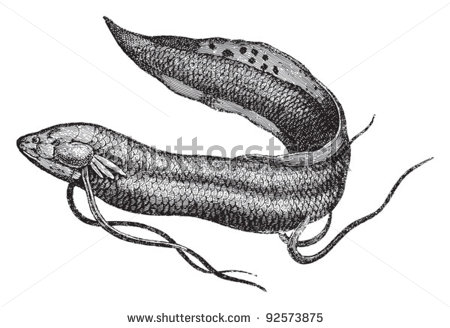 ........
........
the pics of lung fish have feather like appandages on the side of their heads
but more importantly
LOOK AT THE REIGNS GROWING OUT OF THE SIDES OF THIER HEADS
like a rider uses to control a horse!!!!!
and there is the mane as well
side note
I'm correcting myself here from an earlier post I made
Budda had blue eyes like Jebus...
krishna was blue like a phoenician, or Pict
and while being at risk of over doing it, there does seem to be something that ties a lot of this together...
there are definitly horse eel heads in your pic above
the center horses as opposed to the croc also have fish tails...
I'm wondering if they are rare because they are not indiginious, but because they came from somehwere else as a curiosity lung fish could have survived a trip...
oh crap look:
ETA

the pics of lung fish have feather like appandages on the side of their heads
but more importantly
LOOK AT THE REIGNS GROWING OUT OF THE SIDES OF THIER HEADS
like a rider uses to control a horse!!!!!
and there is the mane as well
side note
I'm correcting myself here from an earlier post I made
Budda had blue eyes like Jebus...
krishna was blue like a phoenician, or Pict
edit on 22-2-2014 by Danbones because: (no reason given)
edit on 22-2-2014 by
Danbones because: (no reason given)
edit on 22-2-2014 by Danbones because: (no reason given)
edit on 22-2-2014 by
Danbones because: (no reason given)
edit on 22-2-2014 by Danbones because: (no reason given)
reply to post by Danbones
Well that's a thought, I suppose, that these 'beasts' were memories of strange creatures brought back from trips. I'd never thought of that before. You can imagine if an axolotl appeared in Perth one day, it would be remembered for a very long time!
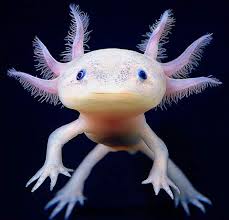
ETA:
like this?
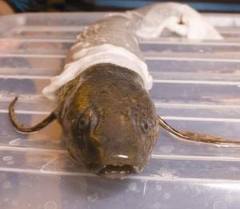
Oh yes, they've got weird 'reins' on the side of their heads.
Well that's a thought, I suppose, that these 'beasts' were memories of strange creatures brought back from trips. I'd never thought of that before. You can imagine if an axolotl appeared in Perth one day, it would be remembered for a very long time!

ETA:
like this?

Oh yes, they've got weird 'reins' on the side of their heads.
edit on 22-2-2014 by beansidhe because: (no reason given)
beansidhe
Bottom left of the stone, there seems to be a horned thing in a dress. The stone is only categorised under 'deer' on the database, with no mention of it. I've never seen it before on a stone.
This might interest you.
Horned God
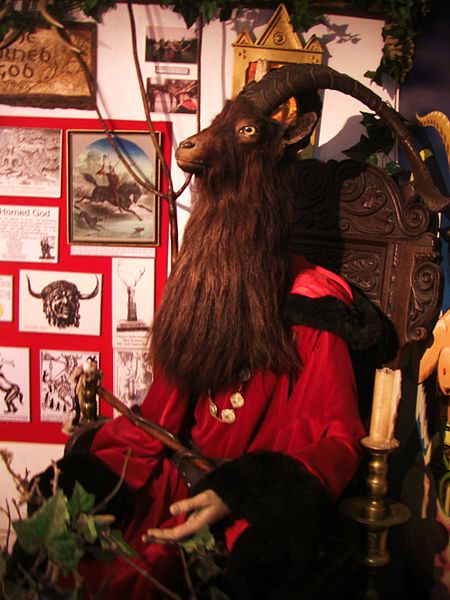
Incidentally but not very interestingly I used to have a recurring dream when I was very young, whereupon as I sat in church the Priests head was replaced by a horned deer, very much like the first picture. Weird.
Anyway, It's interesting (to me at least) that we still carry a Rams head at the front of processions nowadays.
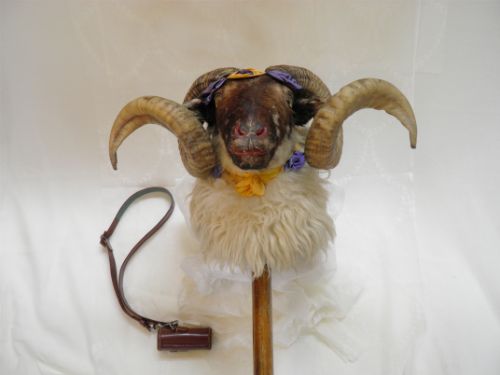
Goodscore RAMcheck !!!
starandcrosss for you
Thats what is at the top of one type of celtic cross!
the astrological symbol for ares the ram
its the little metal sighting piece at the top of staff
Crieghton Miller shows this in his work on the celtic cross, examples of it are in one of the major British museums
IMHO, so thats why the ram's head is at the front of the progression
and lucifer is the light "enlightenment bringer"...thats the connection to goats head soup!!!
well, me and my before lunch brecky beer thinks it is
incidentally i think the end game of the story we are chasing on this thread is something like this:
google is building the second coming of lucifer the AI to beat all AIs...
the ultimate measuring instrument, or cross, the rams head above, leading the way...
to fullfill the deification of the pharoe and travel immortally out to cross the sea of stars....
The epic of Gilgamesh redux
its funny, I'll bet a lot of cultural symbolisms will fit nicely into this frame we make here
starandcrosss for you
Thats what is at the top of one type of celtic cross!
the astrological symbol for ares the ram
its the little metal sighting piece at the top of staff
Crieghton Miller shows this in his work on the celtic cross, examples of it are in one of the major British museums
IMHO, so thats why the ram's head is at the front of the progression
and lucifer is the light "enlightenment bringer"...thats the connection to goats head soup!!!
well, me and my before lunch brecky beer thinks it is
incidentally i think the end game of the story we are chasing on this thread is something like this:
google is building the second coming of lucifer the AI to beat all AIs...
the ultimate measuring instrument, or cross, the rams head above, leading the way...
to fullfill the deification of the pharoe and travel immortally out to cross the sea of stars....
The epic of Gilgamesh redux
its funny, I'll bet a lot of cultural symbolisms will fit nicely into this frame we make here
edit on 22-2-2014 by Danbones because: (no reason
given)
edit on 22-2-2014 by Danbones because: (no reason given)
edit on 22-2-2014 by Danbones because: (no reason
given)
reply to post by Danbones
Just looking at those now, I don't know how I missed these before. Wouldn't mind getting my hands on this little beauty.
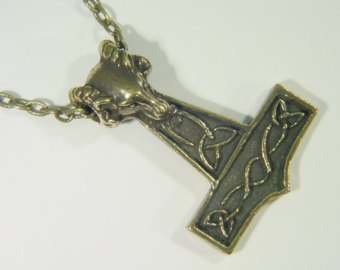
Anyway, this means it's not a pre-Christian symbol and therefore pretty useless to the thread. Sorry for throwing it off track for a second.
Just looking at those now, I don't know how I missed these before. Wouldn't mind getting my hands on this little beauty.

Anyway, this means it's not a pre-Christian symbol and therefore pretty useless to the thread. Sorry for throwing it off track for a second.
reply to post by Ramcheck
It might interest me? LOL - I nearly choked on a Quaver!!
A truly creepy thing, and your dream must have been terrifying - old folk memories, perhaps?
Cerunnos
I know without looking by now that the Minoans will have a horned figure - oh they do, of course, the Minotaur.
It might interest me? LOL - I nearly choked on a Quaver!!
A truly creepy thing, and your dream must have been terrifying - old folk memories, perhaps?
There have been attempts to find the cern root in the name of Conall Cernach, the foster brother of the Irish hero Cuchulainn[26] in the Ulster Cycle. In this line of interpretation, Cernach is taken as an epithet with a wide semantic field — "angular; victorious; bearing a prominent growth" — and Conall is seen as "the same figure" as the ancient Cernunnos.[27]
Cerunnos
I know without looking by now that the Minoans will have a horned figure - oh they do, of course, the Minotaur.
beansidhe
Just when it all seems to be slowly falling into place, I came across this stone which I hadn't looked at carefully before. Logarock's going to hunt me down and punch me repeatedly for even more diversions, I know, but what is this?
Bottom left of the stone, there seems to be a horned thing in a dress. The stone is only categorised under 'deer' on the database, with no mention of it. I've never seen it before on a stone.
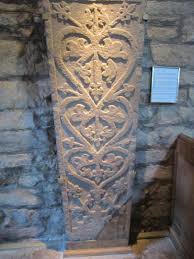
This stone is from Sweden and I only posted it because of the little doohickey rod ends that are just like the ones on this stone you posted.
Pict Sea Horse, that is the mythical critter representing sea and land.
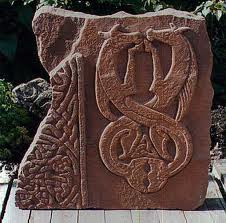
Corinthian 4th cent BC form pottery.
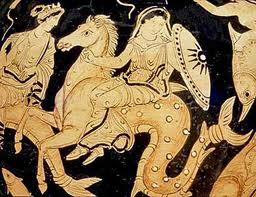
Rome
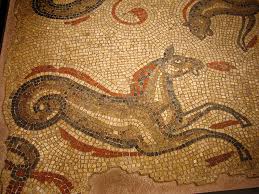
Sidon Phoenician
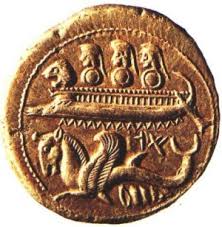
Etruscan
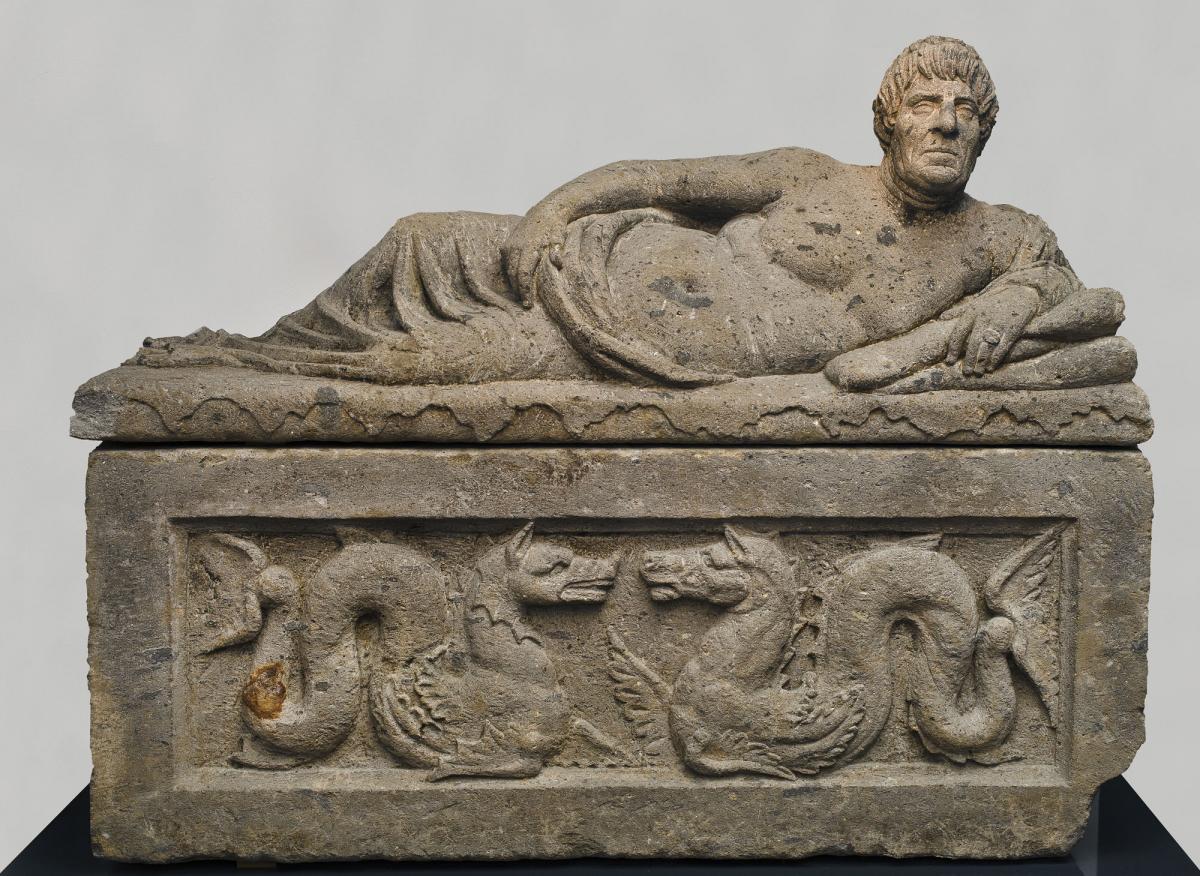

Corinthian 4th cent BC form pottery.

Rome

Sidon Phoenician

Etruscan

reply to post by Logarock
They must be Kelpies, the beasties, they fit too well with all the accounts, not to be.
They're still alive and well in Scotland; here's our most recent ones:
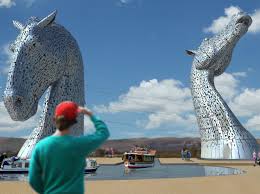
Constructing the Kelpies
They must be Kelpies, the beasties, they fit too well with all the accounts, not to be.
They're still alive and well in Scotland; here's our most recent ones:

Constructing the Kelpies
new topics
-
Simple Thanksgiving
Food and Cooking: 5 hours ago -
Trump could make a peaceful American Revolution
US Political Madness: 8 hours ago -
Trump Presidential Transition Team will not use GSA or Government entities to come to DC
US Political Madness: 9 hours ago -
Mind Blowing Cave under someones land
Fragile Earth: 9 hours ago -
The Party of Peace - Trump Cabinet Picks Targeted with Death Threats
US Political Madness: 10 hours ago
top topics
-
V.P. Kamala Harris releases a video and nobody understands why
US Political Madness: 13 hours ago, 16 flags -
The Party of Peace - Trump Cabinet Picks Targeted with Death Threats
US Political Madness: 10 hours ago, 15 flags -
Mind Blowing Cave under someones land
Fragile Earth: 9 hours ago, 14 flags -
Trump could make a peaceful American Revolution
US Political Madness: 8 hours ago, 14 flags -
Trump Presidential Transition Team will not use GSA or Government entities to come to DC
US Political Madness: 9 hours ago, 13 flags -
Simple Thanksgiving
Food and Cooking: 5 hours ago, 8 flags
active topics
-
The Party of Peace - Trump Cabinet Picks Targeted with Death Threats
US Political Madness • 27 • : DBCowboy -
Simple Thanksgiving
Food and Cooking • 25 • : GaPeach30 -
Mind Blowing Cave under someones land
Fragile Earth • 15 • : rickymouse -
President-Elect DONALD TRUMP's 2nd-Term Administration Takes Shape.
Political Ideology • 256 • : WeMustCare -
-@TH3WH17ERABB17- -Q- ---TIME TO SHOW THE WORLD--- -Part- --44--
Dissecting Disinformation • 3389 • : Crazierfox -
Trump Presidential Transition Team will not use GSA or Government entities to come to DC
US Political Madness • 11 • : WeMustCare -
I thought Trump was the existential threat?
World War Three • 113 • : WeMustCare -
Mood Music Part VI
Music • 3719 • : MRTrismegistus -
Tunnels of Terror: The Cryptid Connection The Why Files
Cryptozoology • 5 • : TheMisguidedAngel -
V.P. Kamala Harris releases a video and nobody understands why
US Political Madness • 75 • : matafuchs

